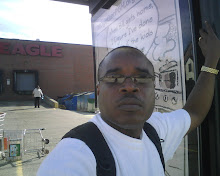Haiti and the unfolding response strategy demonstrate how little we have learnt after decades of dealing with disasters. It is my understanding that the Prime Minister of Dominica, who is also the current chair of CARICOM, Hon. Roosevelt Skerrit is on his way to Haiti. His visit, I understand will be short but he along with the former Minister of Education and Foreign Minister, Vince Henderson are probably in my estimation, the best disaster coordinators that I know. However, given the magnitude of the quake and the context in Haiti, one can expect logistics problems. Tierney (2007) noted "how people die during disasters is an indication of how they lived." what has worked so far in Haiti, it the determination and effort of local people in mounting the rescue effort. Often with bare hands, simple tools, patience and tenacity, they have been able to rescue many. High tech equipment, technology and experts and all those gadgets often tooted as tools for recovery are nowhere near present. It is local people, ordinary people who are now making the difference in Haiti.
Despite the assurance that assessors were evaluating the situation, they were unable to recognize that the airport was too small, the port was damage and has to find alternatives and the roads were impassible. No amount of manuals can make a difference here and it is this situations that make people cynical about disaster education and its ability to make a difference. In any case, the Haitian context is what is essential and disaster management should be designed within this context: the poverty, inadequate infrastructure, little expertise, inadequate organizational and institutional support.
Disaster recovery is the function of local people and local organization and the Haitian case is proving that. This is even more so when no one can reach the disaster site from the outside. Dominica's experience of using local disaster management committees in each community with responsibility for shelter management, local relief and reporting with central government and related disaster organization - the red cross, public utilities, media, taking on a coordinating role. The media has demonstrated that they are essential assets for relief mobilization and distribution as well. However, Dominica's experience has been with hurricanes which can be forecast and preparation made. The devastation can be just as tragic as Dominica discovered with Hurricane David In 1979. A system of local village councils also assist in organizing for disasters.
We need heavy equipment to clear roads, choppers to air lift food. local food centers can be manned by FAO and other UN Agencies who know the place well; the Red Cross to coordinate the list of missing they have wide experience in that area and providing emergency supplies; the church has years of experience in feeding large groups of people: the Adventist Relief Agency (ADRA) who are working in Haiti are excellent at Emergency shelter construction; the army are tent experts, they live in those all the time: UNICEF and Save the Children also in Haiti are best with children providing emergency education and supplies and support. Those kind will need PSTD intervention. Doctors without borders are world renowned to know their roles. Both the Dominica Electricity Company and LIME Telecoms in Dominica as well have tremendous experience in the restoration of electrical and telecoms infrastructure. They worked in Grenada after Ivan and in Montserrat at the Soufirere volcano; LIME moved it's cables underground to protect them after the use of community health workers, and local fist aids can be used to stabilise the injured.
However, the first three days of chaos is expected can be reduced significantly if locals - community organization is fostered because this is what is essential when cultural protections collapse. Neighbors know where people are, what their conditions are. Again Dominica is fortunate because of its health care system. a cadre of health and medical persons are located within each community. Haiti's poverty is a serious drawback in this case but there are some structures in place that can be used as I mentioned.
What is instructive here is how the very structures to be used for response and relief crumble during disasters and that it is local people, ordinary people who are presently making the difference, not only in direct help but how after almost 72 hours, they have been able to conduct themselves; their tenacity, attitude and patience; I supposed forged out of centuries of hardship and pains maybe. These are the protections in which we need to invest because Haiti shows that irrespective of the context this is what works in those critical hours. It can also work in the long term. Research in children, learning and chronic natural disaster will demonstrate how this can be done on a sustained level using intergenerational approach and the establish system of education.
Subscribe to:
Post Comments (Atom)

No comments:
Post a Comment